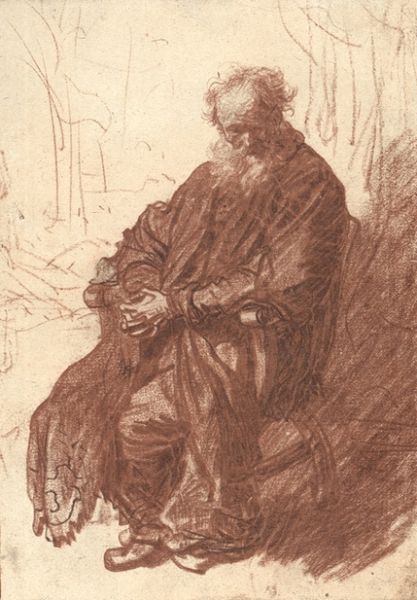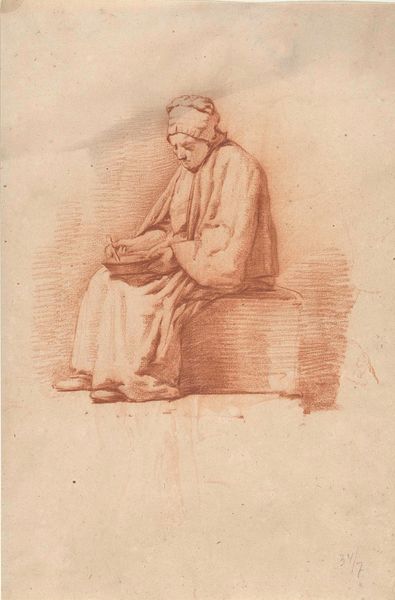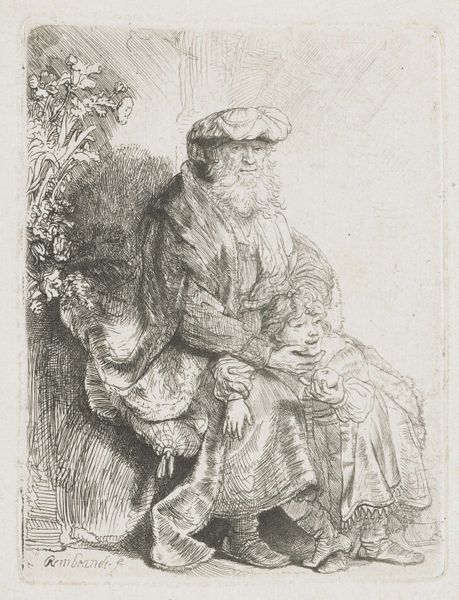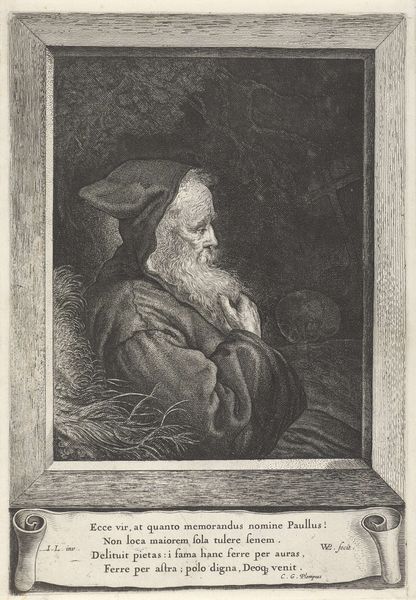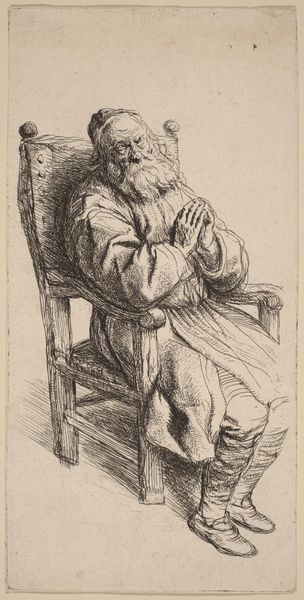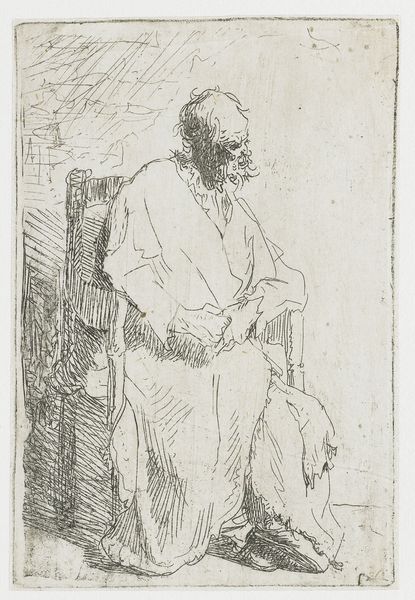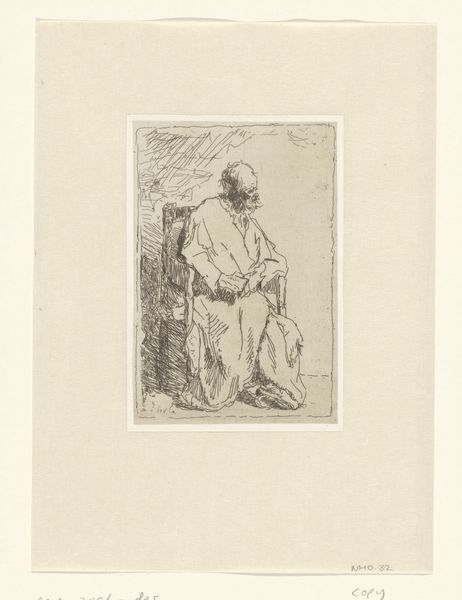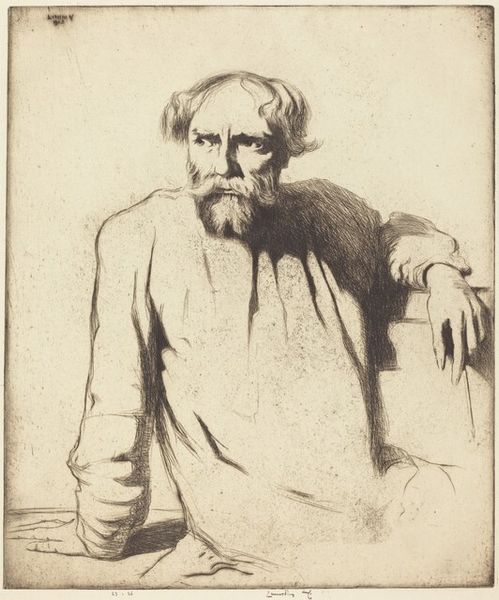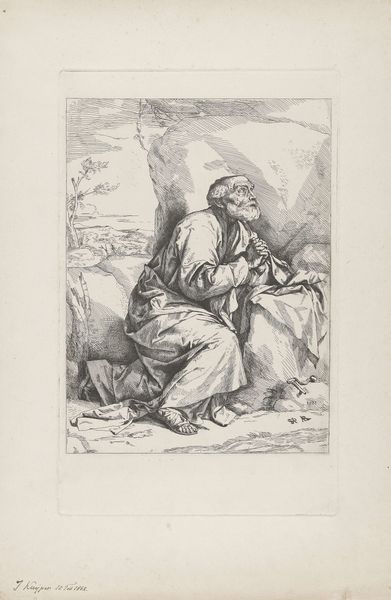
etching
#
portrait
#
baroque
#
etching
#
mannerism
#
portrait drawing
Dimensions: height 208 mm, width 146 mm
Copyright: Rijks Museum: Open Domain
This is Jan Lievens's "Hermit in a Cave," an etching made at an unknown date in the 17th century. The magic of etching lies in the contrast between precise line and atmospheric tone. Look closely, and you can see how Lievens created this image. He would have coated a metal plate with wax, scratched his design into it with a needle, and then bathed the plate in acid. This would bite away the exposed metal, leaving behind an incised image. When inked and printed, these lines transfer to paper. The controlled process of etching is what makes this print so compelling. It captures the essence of labor, both the artist's careful work and the implied solitude of the hermit, whose coarse clothing is vividly described. In this work, Lievens coaxes the medium of etching to explore the human condition, finding dignity even in apparent isolation. By considering the labor involved in its production, we can understand how such a print can invite empathy.
Comments
No comments
Be the first to comment and join the conversation on the ultimate creative platform.

